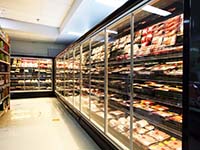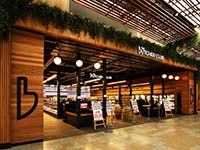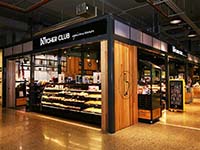For food-related businesses to thrive, they must make sure that their food products are preserved and stored properly. One of the few things that they can do to store them is through refrigeration units. Alternatively, coolrooms can also be maximised for food preservation and storage.
Coolrooms are special rooms that are designed to store and preserve the quality of food products. Most fruits, vegetables, meat, and seafood can all be placed inside the coolrooms to maintain their freshness and quality. Although coolrooms can basically provide the needed storage temperatures and conditions for food products, they must be handled with the utmost care and attention. Additionally, certain health and safety requirements must be followed to maintain their optimal operations.
If you currently own and operate coolrooms, here are some Australian health and safety requirements that you must know and follow.
Design Cost-Effective Coolrooms
Your existing coolrooms may already provide you with the cooling needs for your food products, but their general design might not follow the set requirements in ensuring safety. Fortunately, there are set guidelines that you can consider when designing and planning for your more efficient coolrooms.
For one, your coolroom must not have any internal pillars that would interfere with the operations of forklifts. Additionally, it must have adequate lighting, provisions for a hoist or other mechanical aid, and drainage points. The walkways and platforms of your coolroom must also be designed appropriately so they would not bring any hazards or issues. Likewise, your coolroom’s ceilings and floors must be able to handle the weight of your products as well as the accumulation of ice.
Maintain Specific Temperatures
Several raw food products can easily spoil under high temperatures. And if they are not stored properly, these food products would easily allow the growth of bacteria, which may contaminate them and trigger cases of food poisoning. Contaminated food products can also affect the condition of other food products, which can be a huge loss for your business and facility.
Therefore, your coolrooms must be set to temperatures that can maintain their quality and freshness. Usually, food products that are sensitive to heat must be stored in coolrooms with temperatures of 5 degrees Celsius and below. In some cases, freezing high-risk food products at -18 degrees Celsius can stop bacteria from multiplying and prevent them from early spoilage.
Offer Training and Assessment
Aside from designing cost-effective coolrooms and their specific temperatures, you must also provide training sessions and a series of assessment for your employees and staff members. Whether they have to access the coolrooms every day or not, all of them must have sufficient knowledge about coolrooms and proper food storage. They must know all the procedures that must be done when reporting hazards and resolving issues. They must likewise understand all risk control measures that are already in place. From these training sessions, a competency-based assessment must be conducted to help you verify their know-how around coolrooms and all actions that must be done around these rooms.
Following health and safety requirements for your coolrooms can help you optimise the operations of your business. For more information about coolrooms, feel free to call us at P&R Commercial Refrigeration.
Optimized by: Netwizard SEO




